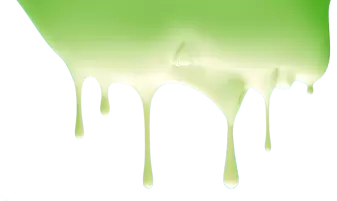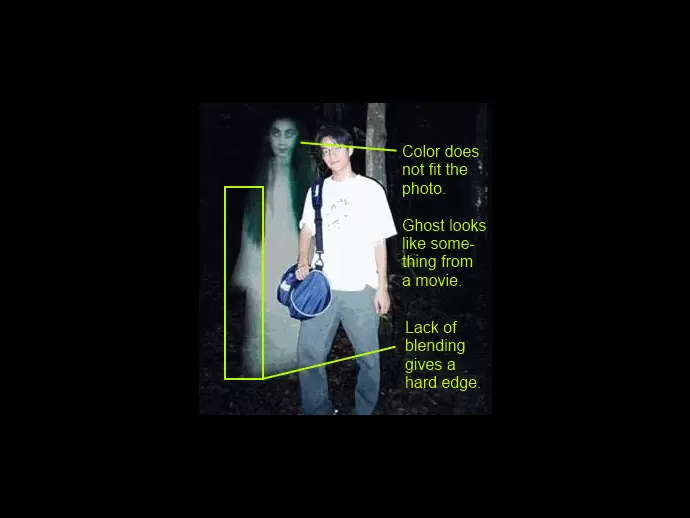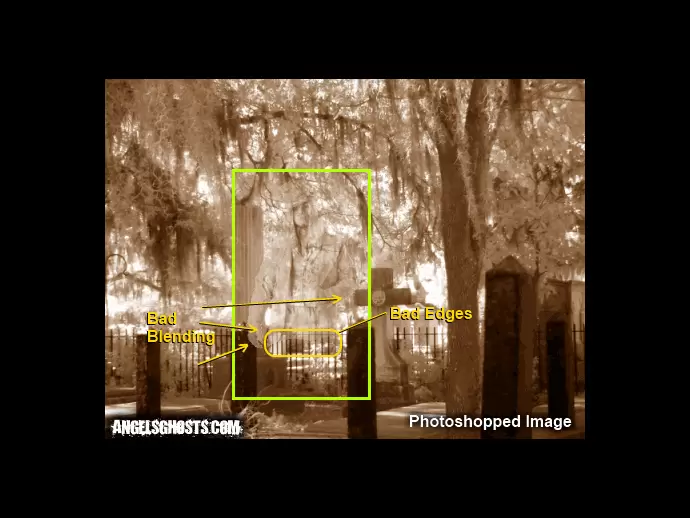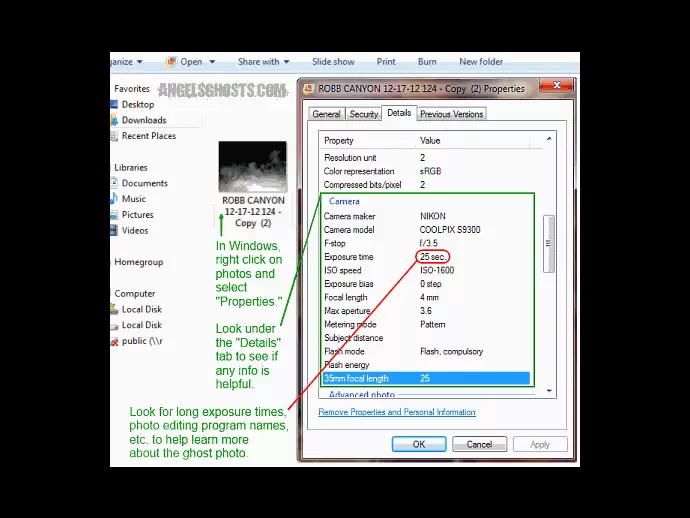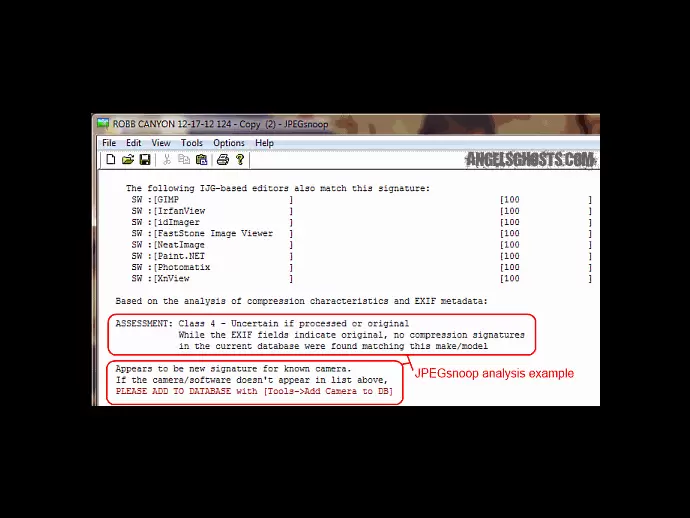 Learn what to look for when examining ghost pictures and how to tell if a real ghost is in a photo...
Learn what to look for when examining ghost pictures and how to tell if a real ghost is in a photo...
We regularly review ghost photos, so it's common for people to ask us how to detect a false or fake ghost picture from photographs of real ghosts. So, let's begin by defining the difference between the two:
- False Ghost Photo = a photo that has an explainable photographic artifact that is mistaken for being paranormal.
- Fake Ghost Photo = a ghost in a photo that has been either created during the photographic process (e.g. staged) or added/altered with photo editing software.
There is no fool-proof method for validating a real ghost picture from a fake. The ghosts we think we see in photos can be examined, however, and the following are some tips on how to tell if a ghost picture is fake or false.
(First Fake Ghost Photograph - above)
Common Internet ghost photo hoax is obvious if you look closely. The color of the ghost does not fit well with the surrounding image.
(Third Fake Ghost Photo - above)
Analyzing this purported ghost picture more closely reveals that the edges of the arms have white spots where it was "cut out." These are examples of hasty blending errors. The straight edges at the mid-torso also show a lack of blending into the background.
(Fourth Fake Ghost Photo - above)
Two photos show some things to look for during analysis. The first ghost pic has two errors: the edge of the photo laid on top is visible; the direction of light and shadow is incorrect on the ghost - it doesn't match the rest of the light pattern.
How to Analyze Ghost Photos
- Get the Original Photo for Analysis - Let's assume the photo belongs to someone else. Begin by requesting to review the original photo before being resaved, renamed or edited in any way. You want the cleanest image and one that has not gone through a photo editing program and resaved. This can, sometimes, quickly eliminate a fake.
- Learn Some Backstory Behind the Ghost Photo - The more you can find out about a ghost image, the better chance you will have of understanding what you are looking at. Authentic ghost pictures often have a compelling story behind them, and there just may be a witness who can substantiate the claim of its authenticity.
- Find out the Conditions - Understanding things such as when the ghost photo was taken, where, the temperature, etc. can really help determine what might have caused the anomaly to appear in the photo. For example, was it cold outside? Were people smoking? What time of day was it? Where was the photo taken - inside, outside, in a crowd, etc.
- Look for a Ghost Photo That Was Staged - Ask yourself, why was this photograph taken in the first place? Is the ghost front and center? Is it fully in the frame? Is it too perfect of a ghost? Does something just not "feel" right about it? Your gut can be a very good bullshit detector!
- Look for Bad Cropping and Missed Blending - Most fakes are made by laying one photo (e.g. the ghost) over top of another image. Examine the ghost for mistakes that do not make it fit into the photograph correctly, such as sharp edges and poor blending. Also, be aware of ghost photo mobile apps that add "ghosts" to your standard photographs.
- Review Exif Data - Many people who hoax ghost pictures are unaware that a digital annotation for every image is created by the camera. It's called "exif data." Checking exif data can tell you more about a photograph. You can use a free program ExifPro to check exif data. Sometimes, in Windows, by right clicking on an image and selecting Properties, the exif data can be seen. Look for time stamp differences and signatures of graphic art programs for fakes. False apparitions may be caused by a long exposure time. Learn more about, Exif Data and Ghost Pictures.
- Use an Image Analysis Program to Analyze Ghost Photos - Give JPEGsnoop or ImageJ a try. Both programs can scrutinize ghost pictures for digital alterations that may have been made by photo editing software. See the screenshot of a JPEGsnoop ghost picture analysis. The program is simple to use, takes seconds and can alert you to fakes.
- Look for Incorrect Perspective Distortion - The lens of a camera will slightly distort objects in a photograph. This effect is known as "perspective distortion." Often times, ghosts that are pasted into a photo do not have the same perspective as the original image. Learn to spot this common mistake made by pranksters: Perspective Distortion and Ghost Pictures.
- Study Light and Shadow - Pay attention to the direction of the light source(s) in the photograph. In most photos, shadows are cast in the same direction if there is one light source. Examine the ghost for inconsistent direction of light and shadow. From what direction is the light coming from when it falls on the specter? How about for the background? Fake ghosts, often, have differing shadow and light patterns compared to the rest of the photograph. But, keep in mind that real shadow ghosts are not always consistent with shadows in a photo, either. Shadows that are ghosts can be very dark, moving or cast where a normal shadow cannot fall.
- Check the Ghost Picture for Natural Explanations - There are many common incidents that can occur while using a camera that will cause false ghost pictures. You should make yourself familiar with these anomalies and artifacts, such as dust orbs, light reflection, moisture, steam, smoke, etc.
- Is the Ghost "Made Up" by Part of the Surrounding Image? -It is important to look for signs of pareidolia and anthropomorphism. If any part of the background makes up part of the ghostly image (e.g. a tree branch forms the shape of the head; a leaf creates a facial feature, etc), then the ghost is most likely coincidence - a product of our innate ability to see people and animals in patterns. This is not paranormal, but actually, quite normal. See examples and learn more about: Matrixing & Pareidolia, Anthropomorphizing.
How to Tell if a Ghost in a Photo Is Real
It's difficult to prove that a ghost in a photograph is real. But, what you can do is eliminate the false and the faked. By doing so, you are left with what may be real evidence of a ghost presence in a pic - something beyond the norm: paranormal.
Top Ways a Ghost Photo May Be Faked:
- Photographing breath in cold air or by creating steam and capturing it with a camera
- Breathing smoke in front of a camera and photographing it
- Setting the camera to slow-shutter speed, having someone step in and out of frame while snapping the photo
- Adding a lightened photo of a person overtop of another photograph by using a photo-editing program

